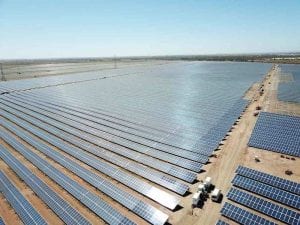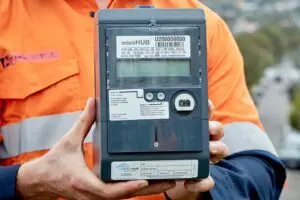The Energy Security Board’s reheated proposals of Angus Taylor’s favoured capacity market design has been met – as expected – by a near unanimous slapdown by the energy industry, which says it is not fit for the purpose and will do too much to prop up existing thermal generators.
The ESB proposal is – the industry hopes – a first disposal draft of a new era that will (at their own request) include environment and emissions factors that will allow these key institutions to set themselves free of the constraints imposed by a climate-denying Coalition.
The general theme of the responses from the industry is that the ESB needs to think differently about the structure of its proposal. As we reported more than a month ago, Hardly anyone supports the ESB’s capacity market. The question then was why is it still on the table?
The general theme is that if the ESB is worried about unmanaged coal closures, it needs to deal with that with a mechanism such as bonds or auctions. If it wants to encourage new flexible capacity, it needs something designed for those new technologies. It can’t do both properly with a single, one size fits all design.
The Clean Energy Council says it is worried that the ESB is trying to do too much too quickly, given the complexity of the market rules and the short deadline it has set itself (a draft by the end of the year).
“These challenges create significant industry concern that a capacity mechanism could in fact further undermine investment signals for new clean energy generation at a time when we need to rapidly accelerate investment in renewable energy, energy storage and transmission infrastructure,” CEO Kane Thornton says.
The CEC proposes a range of interim measures, such as a capacity reserve, targeted and transparent measures to manage fossil fuel exits, and refinements to the recently introduced retailer reliability obligation, or stronger policy support for clean energy generation, to support new investment.
It also supports a storage target that could be rolled out quickly to provide the firming capacity needed to complement variable renewable generation and supply crucial system services such as system strength and inertia.
“Storage can also drastically improve the economics of transmission by acting as a ‘shock absorber’ that allows much more power to flow across the grid to consumers,” it says.
Even the country’s biggest generator of coal-fired power, and its biggest polluter, AGL Energy, agrees.
“The ESB has not put forward a compelling case that its present high-level design, consisting of a centralised capacity mechanism to operate alongside the existing NEM structure, is the best approach when compared to other resource adequacy options available.
“Instead, we consider there are other more compelling options, such as reserve mechanisms, which address similar concerns while also providing additional benefits to energy customers and the broader market.”
CS Energy, the Queensland government owned generator, with a big portfolio, says the ESB needs to start over, saying its current design doesn’t look good for consumers, or new investment.
It slammed the ESB for producing pretty much the same as it did last year, and for producing a blueprint that is “piecemeal and overly complex.” It said: “In attempting to address numerous challenges, the design ultimately does not deliver what is required.”
EV and battery maker Tesla also says the ESB needs to start over, and decouple the orderly exit of coal from a capacity mechanism.
It also says the ESB needs to look at the roll of the consumer, with their growing portfolio of rooftop solar installations, battery storage and electric vehicles.
“The ESB needs to be leading the way internationally in a fit-for-purpose design of a capacity mechanism that includes distributed energy resources and properly incentivises residential customers for the use of their assets within a capacity mechanism or alternative.
“This is particularly important if the capacity mechanism results in a decrease in the energy market price cap that currently incentivises demand response.”
Another battery company, Fluence, agreed that time was needed to get the new market rules right, and the government should focus on targeted policy mechanisms, such as a storage target, to expedite the delivery of sufficient renewables, storage and transmission to meet customer demand whilst managing coal plant
Alinta, which owns the Loy Yang B coal generator, currently scheduled to be the last one out of the grid, is one of the few to declare its support for the ESB proposals. Unlike the principal fossil fuel lobbies, and Trevor St Baker’s Delta Energy, its position is highly nuanced.
It has suggested that coal should be included in the mechanism at least until 2029, with annual reviews from there on, but it has now refined the start of this review date to 2025.
But, a spokesman says, it is also open to a separate mechanism, along the lines of the German exit auction, as long as it is transparent, unlike the Victorian government deal struck with Alinta’s competitor, EnergyAustralia, over the closure of Yallourn.
“Our submission reflects reality – if coal and gas aren’t included in a capacity mechanism from its commencement, for a limited period of time, there will be next to no firm capacity to rely on as a transition insurance policy for the key upcoming 5-to-10-year period,” Alinta CEO Jeff Dimery says.
Origin, the owner of the country’s biggest coal generator, the 2.8GW Eraring facility currently proposed – although not confirmed – for a 2025 closure, is also happy with a split mechanisms, one to deal with thermal exits, another to encourage the sort of big batteries it is planning at Eraring itself and elsewhere in the grid.
“Providing new resources with access to longer term contracts, and separate auctions for existing resources could help mitigate concerns around any crowding out of new investment,” CEO Frank Calabria said this week.
Andrew Forrest’s Fortescue Future Industries agreed.
“There is a clear need to manage the retirement of the existing thermal fleet to maintain reliability while the energy transition occurs,” it said.
“However, we suggest that this is best done through alternative options such as the earlier proposal for orderly exit management contracts (OEMC) to be struck between each state and the asset owner.”
EnergyAustralia, the beneficiary of the secretive Victoria deal, also agreed that the two issues should not be mixed: “It makes little sense to focus on either exit or entry and hope that the other works out.”
It makes you wonder why the hell the fossil fuel and legacy lobbies are ignoring their own members.










